From the April 2023 issue of Apollo. Preview and subscribe here.
In June 2013, a Persian carpet of exceptional beauty, rarity and technical accomplishment sold for $33.8m at Sotheby’s New York, more than three times the previous record for a carpet. The Bacri-Clark throne carpet, made in Kerman in the second half of the 16th century and featuring a motif of sickle leaves, was sold along with 24 other rugs from the collection of the Corcoran Gallery of Art to fund future acquisitions.
The carpet is among the very finest Persian palace carpets made in the 16th and 17th centuries, during the reign of the Safavid monarchs – and carpets from this era remain the pinnacle of the market. Carpet-making has been practised from Istanbul to China for millennia. But in the time of Shah Tahmasp (r. 1524–76), when royal workshops were established in Iran primarily to service the court, and of Shah Abbas I (r. 1588–1629), who moved his capital, with ateliers, to Isfahan in 1598 and centralised the Iranian economy, the art was taken to new heights.
According to Louise Broadhurst, international head of rugs and carpets at Christie’s, the court carpets created under Shah Abbas I are characterised ‘by exceptional drawing, very fine weaving, and the range and beauty of the dyes’. After his death, standards declined, with regional centres of production becoming more significant. Very few of the most outstanding carpets remain in private hands, with major museums in the West and, more recently, the Middle East having competed over the last 30 years to establish the best collections of these highly valued pieces.
Michael Franses, a historian of textile art, wrote at the time of the Bacri-Clark sale that ‘it is most unlikely a carpet of this importance, beauty and outstanding state of preservation will reach the market again.’ For some time after reaching this peak, the market for fine carpets of any significance seemed to be ‘in the doldrums’, as Broadhurst puts it.
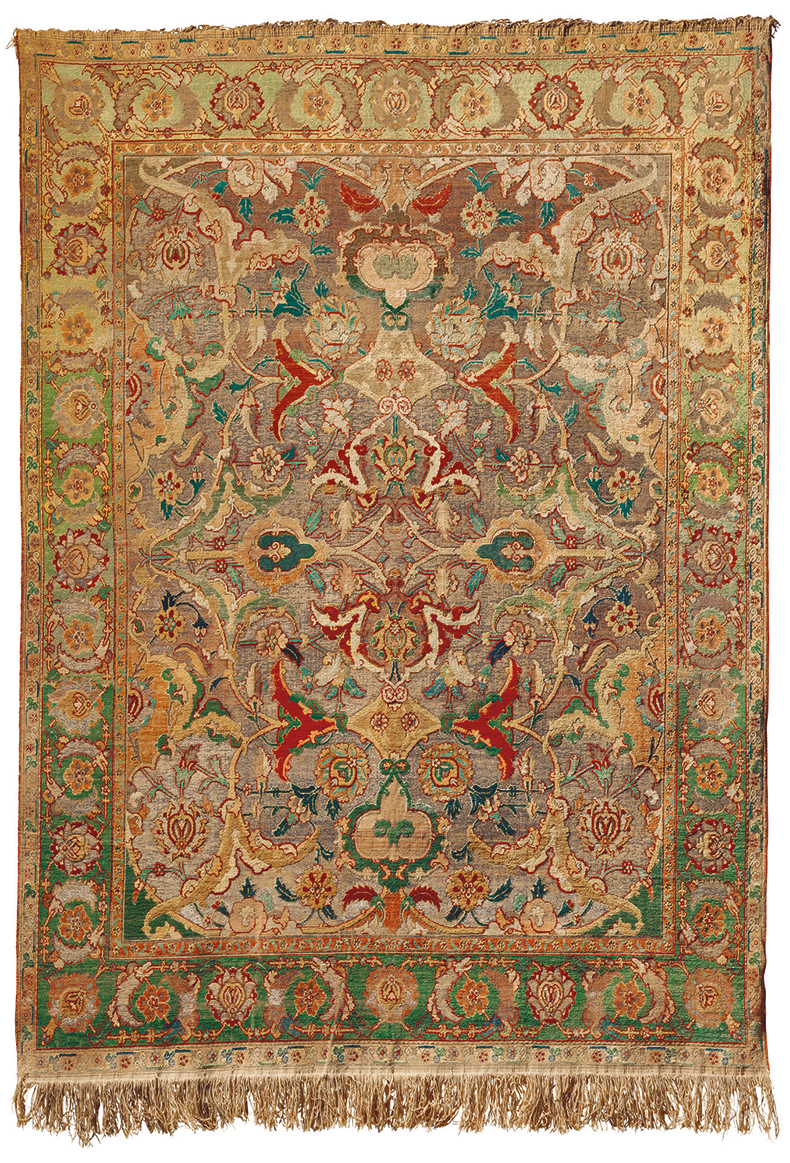
‘Polonaise’ carpet, early 17th century, probably Isfahan. Christie’s London, £2.3m
Recently, however, the market has been reinvigorated. In May 2019, Christie’s London sold two ‘Polonaise’ Safavid carpets, made from silk and gilt thread and dating from the first quarter of the 17th century; they made £3.9m and £3.7m against estimates of £600,000–£800,000 and £550,000–£750,000. These carpets, of which around 300 have sur- vived, acquired their ‘Polonaise’ tag after the Paris World’s Fair in 1878, at which a number of examples embroidered with the arms of their owner, the Polish prince Wladyslaw Czartoryski, were on display. On 1 April 2021, a Polonaise carpet with some corrosion to the metal thread sold at Christie’s London for £2.1m (estimate: £1.5m–£2m). The following March, a fine example in better condition and once owned by Baron Adolphe Carl von Rothschild fetched £2.3m (estimate: £1m–£1.5m).
But, of course, the making of exquisite car- pets was not confined to Safavid Persia. Other hubs emerged all the way along the Silk Route – from India, under the Mughal Emperor Shah Jahan (1592–1666), to the Ottoman Empire under Sultan Mehmed II (1432–81) and Ming Dynasty China. In November 2021, a sale at Christie’s Paris included a 16th-century (late Ming) Imperial dragon carpet, which had probably once been placed beneath a throne in the Forbidden City of Beijing. It sold for €6.9m. Only 16 complete Imperial dragon carpets are known to exist; nine are in the Beijing Palace Museum. In October 2022, Christie’s London sold a Mughal pashmina carpet from c. 1650, with a design of flowers interlocking in a lattice, from northern India, for £5.4m (estimate £2.5m–£3.5m).
Even fragments of magnificent carpets attract attention. Jacqueline Coulter, a senior consultant at Sotheby’s London, says: ‘Embedded in a fragment is enough of the story of their time and place. They are easy to display.’ In its Islamic sale on 27 April, Sotheby’s will be offering a fragment of the border cartouche of the famous Ardabil carpet (1539–40) – ‘once part either of the Ardabil carpet in the V&A or the reduced one in LACMA’, Coulter explains – with an estimate of £70,000–£90,000. In this market, Coulter suggests that provenance and rarity are increasingly important.
At the middle range of the market are rugs made in the Caucasus or Anatolian villages, and high-quality decorative rugs from the late 19th and early 20th century. In its Islamic and Indian World sale on 27 April Christie’s will offer an Anatolian rug, with a design described as ‘Holbein and phoenix’, which dates to the late 15th–early 16th century (estimate £100,000–£150,000). ‘It is a rare survivor of a group of early Anatolian rugs that display a tradition of depicting ani- mals and birds,’ Broadhurst explains. ‘Today, only 18 animal rugs are known to have survived from this period, of which seven are fragments.’ With little or no documentation to enable accurate dating, the depiction of rugs like this in early 14th and 15th century Italian paintings by Sienese and Florentine masters – and indeed the paintings of Hans Holbein the Younger – has offered clues as to their age and origin. A large, rare Anatolian ‘Lotto’ carpet from the late 16th century – the nickname was provided by the scholar Charles Grant Ellis in 1975 – sold for £237,500 at Sotheby’s London in 2019.
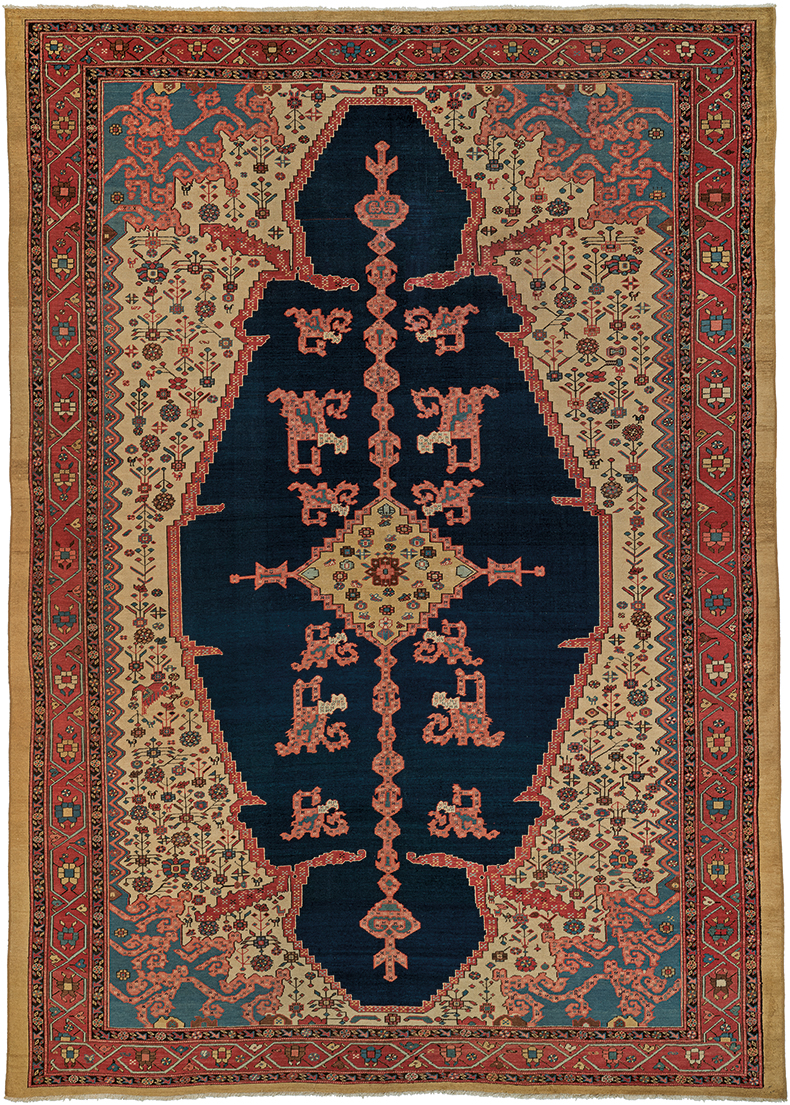
Rug, third quarter of 19th century, Bakshaish, Iran. Claremont Rug Company, $210,000
Over the last three years, the American dealer Jan David Winitz, of the Claremont Rug Company, has seen an upsurge of interest in what he defines as the ‘highly collectible’ field of carpets from the first three quarters of the 19th century carpets, up until about 1875, when chemical dyes began to be introduced.
Winitz sources most of his carpets from distinguished US collections established during the 1960s, ’70s and ’80s. He has available a Persian Ferahan rug with a design of vases, c. 1825, ‘which is among the very finest of the style that I have ever encountered’, for $68,000, as well as a larger rug from the village of Bakshaish in north-west Iran, made in the third quarter of the 19th century, with ‘a consummate rendition of the prized “Dragon and Phoenix” motif ’ ($210,000; Fig. 2). Condition is increasingly important to buyers; Claremont invests heavily in expert restoration.
Vincent Pillinger of the Dorotheum auction house in Vienna notes that there is a lively market for good quality late 19th- and early 20th-century carpets – before production became more commercial. He notes different national tastes and fashions: ‘England is buying the vintage, country house look. Germany is buying fine, classical Persian material of good condition. These days Turkmen carpets are less popular.’ Joshua Lumley, a London dealer, shares Pillinger’s optimism: ‘The decorative market has roared back in the last five or six years. It is about the character and informality of the rug. People like colour.’ His clients are looking for large, antique Turkish carpets, and large Persian carpets with bold designs, constructed using good vegetable dyes: ‘There are lots of things for between £5,000 and £50,000.’
From the April 2023 issue of Apollo. Preview and subscribe here.
Unlimited access from just $16 every 3 months
Subscribe to get unlimited and exclusive access to the top art stories, interviews and exhibition reviews.

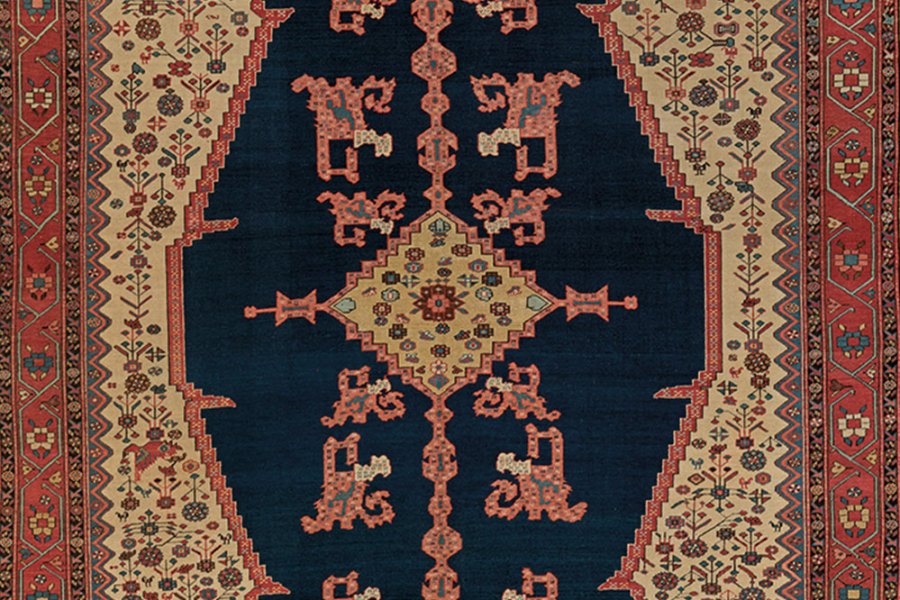
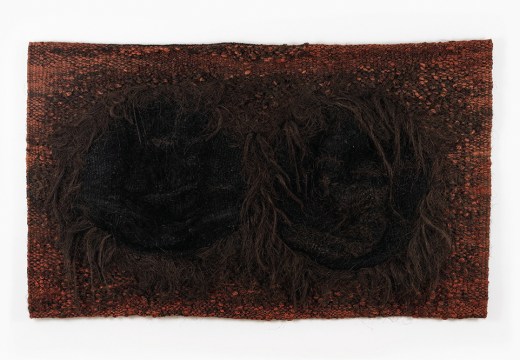
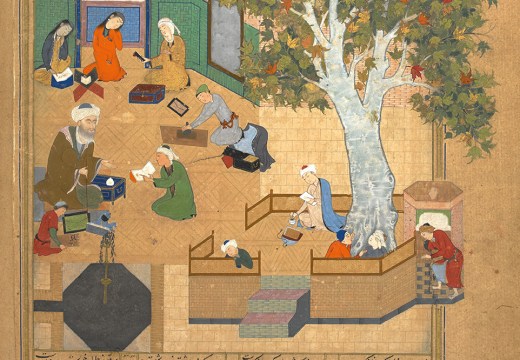
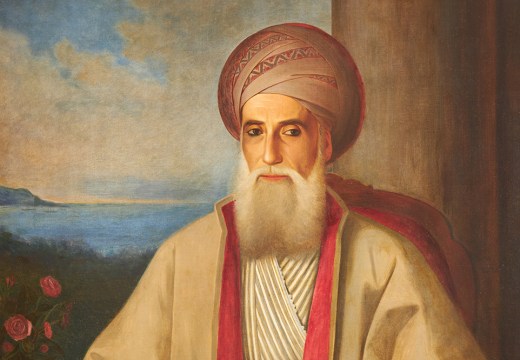









![Masterpiece [Re]discovery 2022. Photo: Ben Fisher Photography, courtesy of Masterpiece London](http://www.apollo-magazine.com/wp-content/uploads/2022/07/MPL2022_4263.jpg)
Has the Fitzwilliam lost the hang of things?